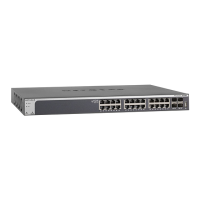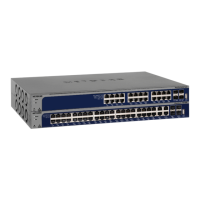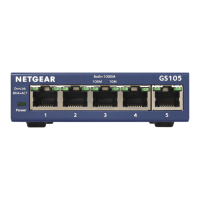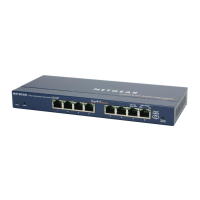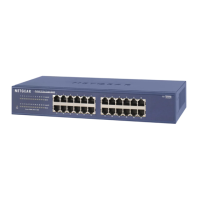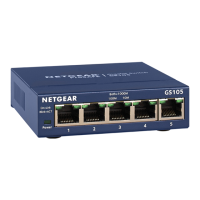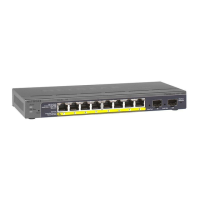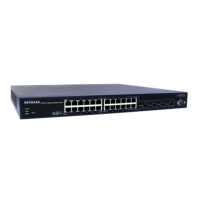Routing
84
XS728T ProSAFE 28-Port 10-Gigabit L2+ Smart Switch
IP
When a packet enters the switch, the destination MAC address is checked to see if it
matches any of the configured routing interfaces. If it does, the switch searches the host table
for a matching destination IP address. If an entry is found, the packet is routed to the host. If
there is not a matching entry, the switch performs a longest prefix match on the destination IP
address. If an entry is found, the packet is routed to the next hop. If there is no match, the
packet is routed to the next hop specified in the default route. If there is no default route
configured, the packet is passed to the software to be handled appropriately.
The routing table can have entries added either statically by the administrator or dynamically
by a routing protocol.
The host table can have entries added either statically by the
administrator or dynamically using ARP.
From the IP link, you can access features described in the following sections:
• IP Configuration
• IP Statistics
IP Configuration
To configure routing parameters for the switch:
1. Select Routing > IP > IP Configuration.
2. Next to Routing Mode, select Enable or Disable.
If you select Disable, the switch will not perform routing.
You must enable routing for the switch before you can route through any of the interfaces.
The default value is router mode.
3. Enter the value for IPv4 MTU (longest packet that can be received).
The following table describes the fields displayed in this page:
Field Description
Default Time to Live The default value is inserted into the Time-To-Live
field of the IP header of datagrams originated by the
switch, if a
TTL value is not supplied by the transport
layer protocol. The value set for this field is 64.
Maximum Next Hops The maximum number of hops supported by the
switch.
This is a compile-time constant.The value set
for this field is 1.
4. Click Apply to send the updated configuration to the switch.
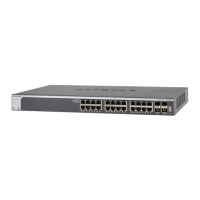
